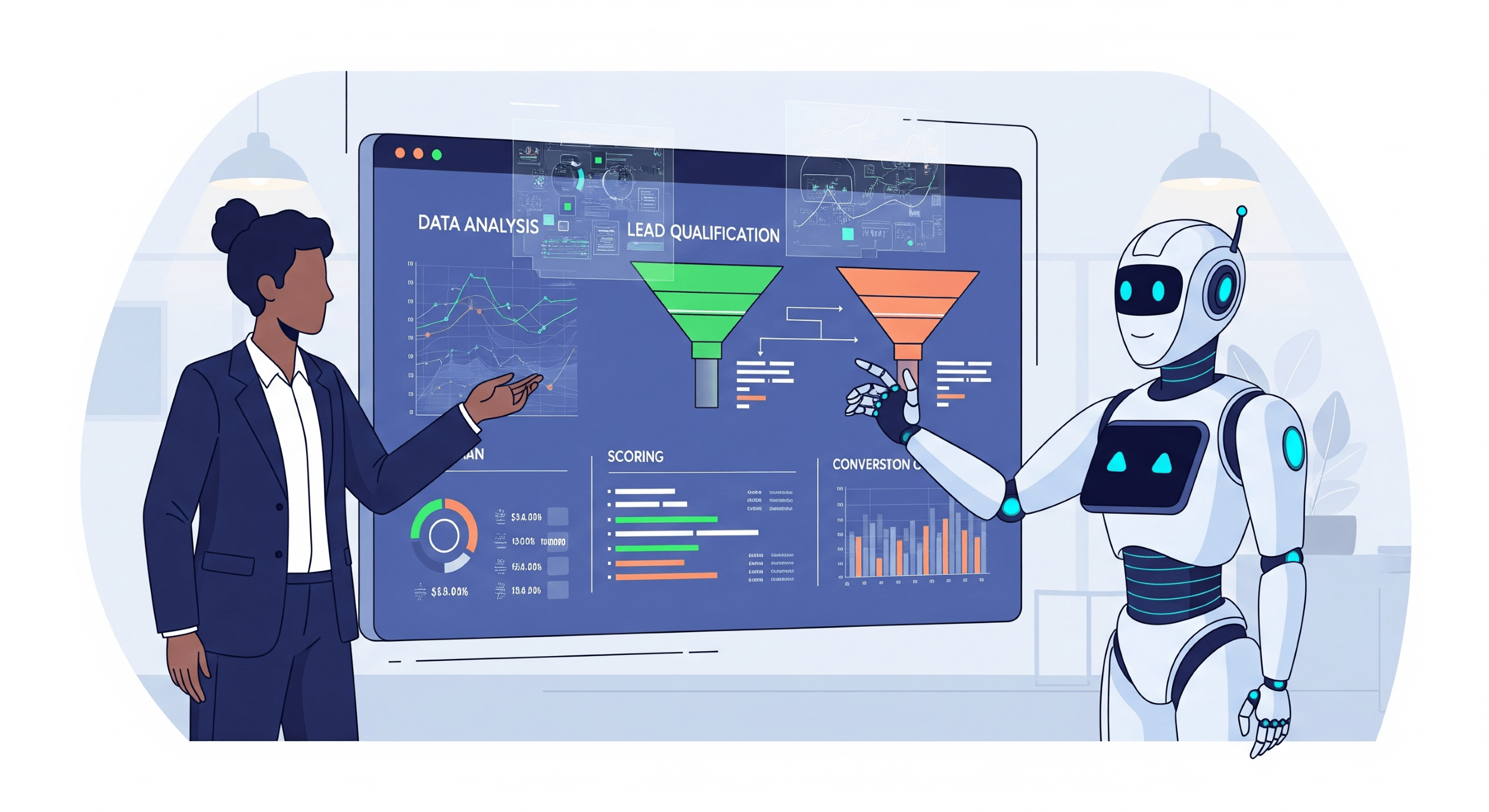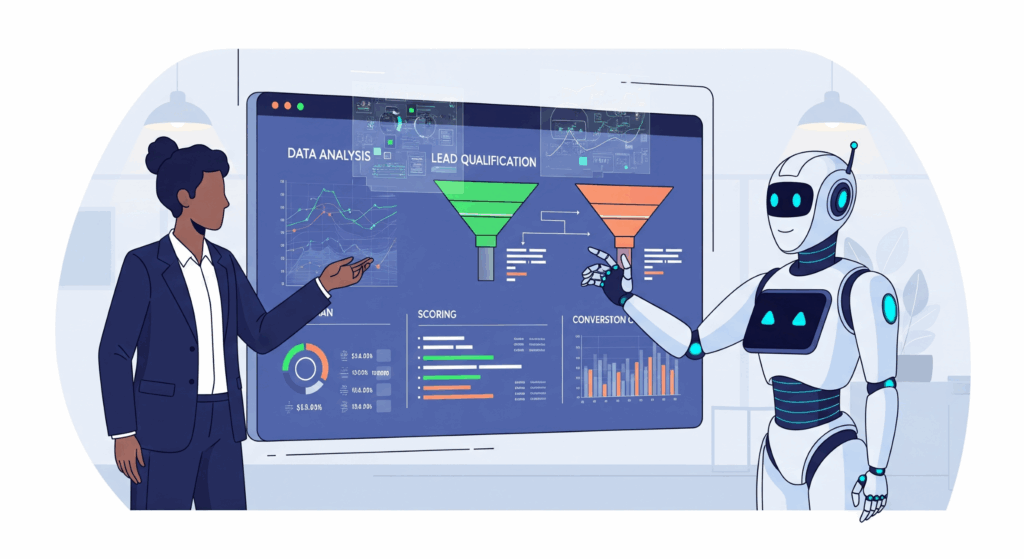This post is also available in:
Introduction: the “Activity” Trap in Sales
Have you ever finished the day feeling like your sales team was incredibly busy, but the revenue needle barely moved? Hundreds of calls, dozens of emails sent, meetings… a whirlwind of activity that, however, does not translate into closings.
You are not alone. This is the silent reality in most B2B companies.
We have been told that the solution is “digital transformation”, and for many, that has meant installing a chatbot or an email marketing tool. But this is like putting a band-aid on a bullet wound. Why? Because more than 70% of digital transformation initiatives fail, not for lack of technology, but for a deadly gap between strategy and execution. Companies invest thousands in AI tools that no one uses, while sales teams drown in manual tasks and the most qualified leads cool off and go to the competition.
In this definitive guide, we are going to break that cycle. We will show you the exact path to implement AI agents that act as the gifted co-pilot of your sales team. We will teach you how these systems not only answer questions, but qualify leads with amazing precision, personalize each interaction at scale, and increase your conversions in a measurable way.
This is not futuristic theory; it is the same strategy that has generated up to 300% more qualified leads for companies like yours.
Why is your Sales Team Drowning in Manual Tasks? The True Cost of Inefficiency
Today’s B2B sales teams face a perfect storm of challenges: lengthening sales cycles, customers demanding extreme personalization, and the pressure to manage hundreds of touchpoints across multiple channels.
This constant friction translates into problems that you are sure to find painfully familiar:
- Manual Lead Qualification: Your best salesperson invests 30% of their day researching leads on LinkedIn and filling in data in the CRM, instead of being on a closing call. It is valuable work, but repetitive and exhausting.
- Inconsistent Follow-up: A promising prospect asks for more information on a Friday afternoon. On Monday, between meetings and emergencies, the follow-up is forgotten. By Wednesday, that prospect has already scheduled a demo with your most agile competitor. Opportunity lost.
- Generic Communications: The same follow-up email “Hello [Name]” is sent to a CEO of a Fortune 500 company and a manager of a startup. The result is the same: the email is ignored because it does not address the problems, the context, or the specific needs of each one.
- The “Timing” is a Guess: When is the perfect time to call? After they download a case study? Or when they visit the pricing page for the third time? Your team has to guess, and most of the time, they are wrong, calling too early or too late.
The brutal summary is this: your team is too busy doing “sales work” to be able to SELL. They are trapped in a cycle of administrative and repetitive tasks that drain their energy and limit their true potential.
The Silent Revolution: how AI Agents Multiply your Salespeople
Forget about basic chatbots that only know how to respond with a menu of options. Modern AI agents are the analytical and strategic co-pilot that your sales team has always needed.
They are intelligent systems that perform three key tasks with superhuman precision and speed, freeing up your salespeople to focus on building relationships and closing deals.
1. Intelligent Lead Qualification (85% Accuracy or Higher)
Imagine a system that works 24/7 in the background. When a new lead comes in, the AI agent does the following in milliseconds:
- Analyzes behavior: “This lead has visited the pricing page twice, downloaded the case study on the financial industry, and spent 7 minutes watching our demo video”.
- Enriches the data: Connects to public databases to obtain the size of the company, its annual turnover, and the technologies it already uses.
- Assigns a score: Using machine learning algorithms trained with your historical sales data, it assigns a “likelihood of closing” score from 1 to 100.
Result: Your sales team arrives in the morning and instead of a messy list of 100 leads, they see a prioritized list with the 15 “hot” leads that have a score higher than 85, ready to be contacted.
2. Personalization at Scale (without Sacrificing Efficiency)
An AI agent can generate a follow-up email that a human would take 30 minutes to write, and can do it for 500 prospects at a time.
Example: The agent detects that a prospect is a “Director of Operations” in the logistics industry. The follow-up email that it generates automatically is not generic. Includes:
- An initial paragraph mentioning a common challenge in the supply chain.
- A link to the specific case study of a logistics client.
- A phrase that adapts the main benefit of the product to “operational efficiency”, the language that a Director of Operations speaks.
Result: Each potential client receives a communication that resonates with their specific problems, which multiplies the probability that they will respond.
3. Optimal Contact Timing (the Secret Weapon of Conversion)
Predictive algorithms analyze thousands of data points to determine the exact moment when a prospect is most receptive.
- Detects that a key prospect has just opened their pricing email for the second time on a Tuesday at 10:05 AM.
- Immediately, it creates a task in the assigned salesperson’s CRM with the note: “Contact NOW. Prospect actively reviewing prices.”
Result: Your salesperson calls at the moment of maximum intention, not hours or days later. The conversation goes from being a “cold call” to being a “timely assistance”.
Real Case: 216% Increase in Qualified Leads – “The increase in organic leads has been amazing. These leads come to us more informed and ready to participate, which directly impacts our results.”
– Chris Wall, COO & President of Franchise Brokers Association.
From Strategy to Reality: our Proven 5-Step Approach
At Digital Strategy Ideas, we know that technology without a clear strategy is just an expense. Our methodology for implementing AI agents focuses on generating measurable results from day one.
- Audit of the Current Process: The first step is a deep dive into your current operation. We map your sales process from beginning to end, identifying each bottleneck, each manual task, and each point of friction. We prioritize automation opportunities based on an impact vs. effort matrix to ensure an early win.
- AI Agent Design: We create the “brain” of the agent. We define the conversational logic, the decision flows, and the escalation points to humans. What questions can the agent answer? When should it transfer the conversation to a salesperson? What data does it need to make a decision?
- Data Integration: We connect the agent to your existing systems (CRM, ERP, marketing databases) so that it has a 360° view of each client. An agent that knows a client’s purchase history is infinitely smarter than one that does not.
- Training and Optimization: We continuously refine the agent’s behavior based on data from real interactions. Machine learning models become smarter with each conversation, constantly improving their accuracy and effectiveness.
- Gradual Scaling: We implement in phases. We start with a subset of tasks or leads to minimize risks and ensure seamless adoption by your team. We measure, we learn, and then we expand.
The Future of Sales is Hybrid (and it is Already Here)
One of the biggest concerns we hear is: “Is AI going to replace my sales team?” The answer is a resounding NO.
AI is not here to replace salespeople. It is here to empower and liberate them.
The sales teams that will dominate the future will be hybrid teams.
- Artificial Intelligence will take care of 80% of the work that is repetitive, analytical, and data-driven: prospecting, initial qualification, standard follow-up, data enrichment.
- Humans will focus on the 20% of the work that requires empathy, creativity, and strategic judgment: building long-term trust relationships, handling complex negotiations, and closing the most important deals.
Companies that adopt this technology now will not only survive, but will thrive with a massive competitive advantage. The question is no longer whether to implement AI in sales, but when and how to do it strategically so as not to be left behind.
Ready to Activate the AI Co-pilot of your Sales Team?
And Revolutionize your Sales with AI
Our team can help you design and implement AI agents that transform your sales processes
Now I would like to know about your own experience: What is the biggest obstacle or time “black hole” that your sales team faces right now? Leave your answer in the comments below!

